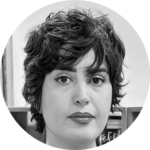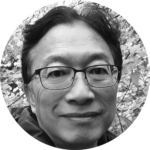
The glass of water I drank every morning
The water bottle I gave my son every day when he went to nursery school
The spring water I drank by scooping it out with my hands
The stream where I caught guppies
The pond where we throw eggs and worship
The school grounds where I play football
Invisible, it has neither smell or taste. Was that substance in the water I drank and touched? In the water we used to grow our vegetables? Is it still in the water that flows out of our faucet now? What harm have these substances, accumulated in my body, done to me and my children? In 2016, it was announced that water supplied to 450,000 people in the central and southern parts of the main island from a water treatment plant located in central Okinawa had been contaminated with organofluorine compounds (PFAS). PFAS are carcinogenic substances known as 'Forever Chemicals', which rarely break down in nature or in the human body. In 2020, a fire alarm in a hangar at Futenma Airbase malfunctioned causing a large amount of firefighting foam to be released into the community of Ginowan. The fluffy foam, which wafted romantically and seemed never to fade, contained PFAS. People tried to grasp the true nature of the water they had taken for granted and retraced fragmented memories of the ‘foam’ they may have seen. This is the story of the PFAS contamination leaked from US military bases in Okinawa told through local people’s memories of the water and land. It is not possible to measure contamination figures of the past. Neither the Japanese government nor the US military have offered any fundamental solutions or even acknowledged the source of contamination. As the reality of the contamination was gradually revealed, the hazy memories of those affected, many overlooked until now, have become distorted. I walked through the contaminated land and water, tracing their memories. Eternal chemicals that cannot be visually captured except as fluffy bubbles. The source of this pollution cannot be reached by any means, blocked by the fences of the airbase. The silent burden of these beautiful islands that visitors dare not look for beyond the pleasant breezes and sound of waves. The invisible has become intertwined and overlapped. Wading through the dreamy aabuku (foam) it remained elusive, I wove together the words and unspoken thoughts of the people I met.







